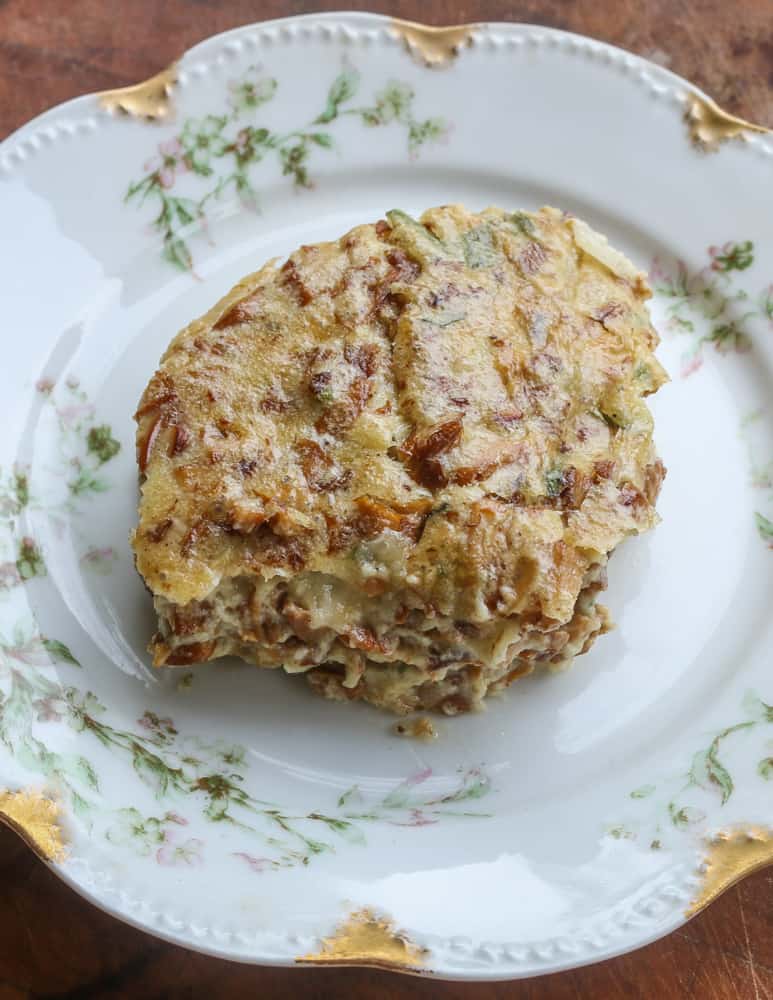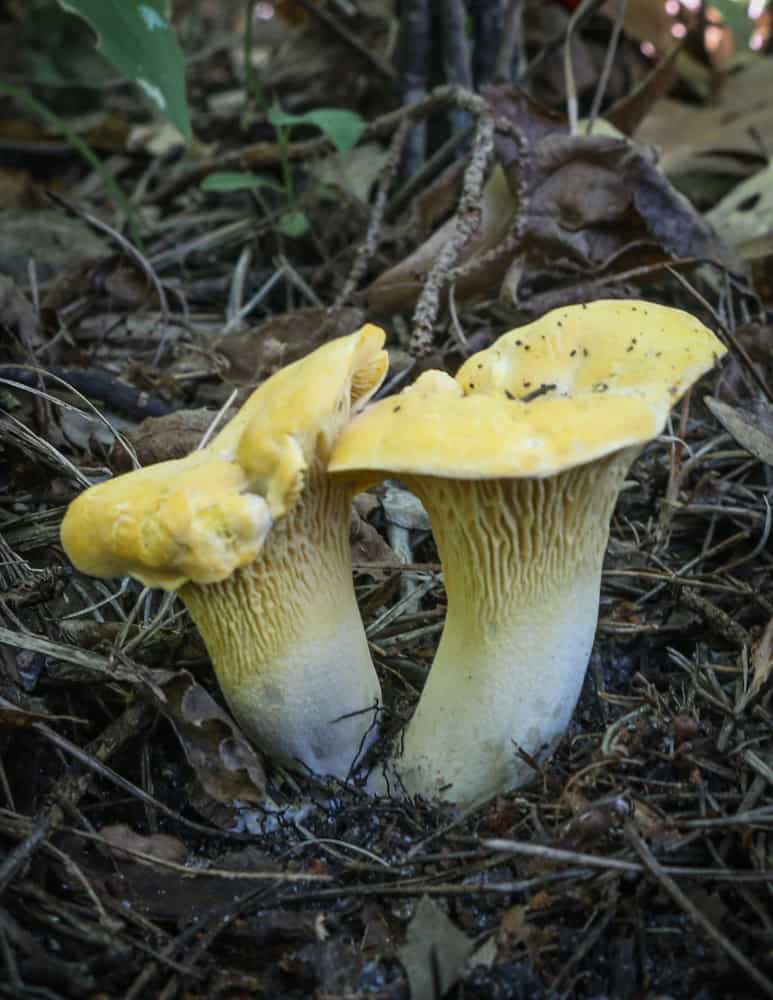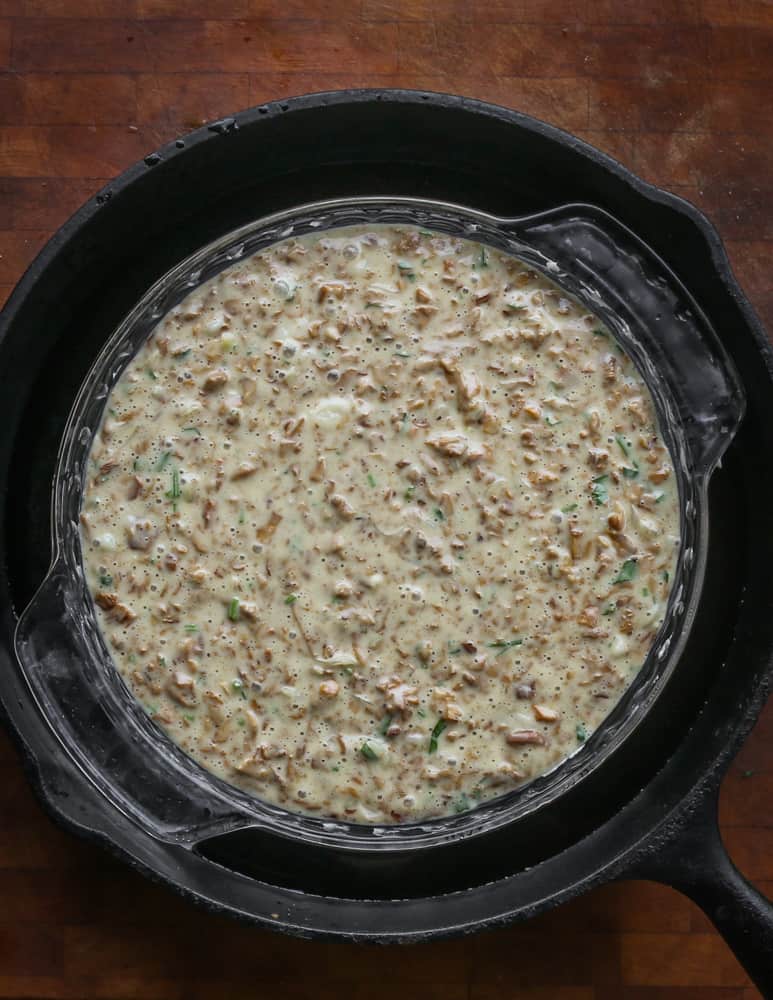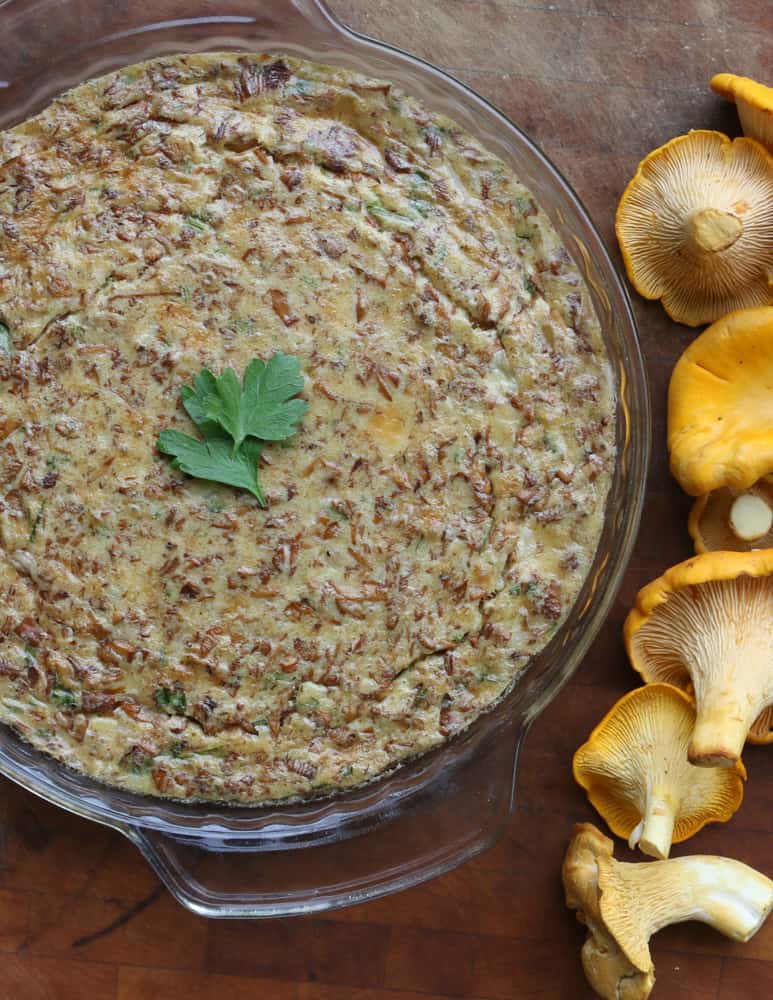This creamy baked chanterelle frittata is a rich mushroom side dish from French Chef Richard Olney. It's packed with chanterelles, and is a fun variation to try if you have some extra mushrooms to spare.

In his most well-known book, Simple French Food, Olney shares a recipe for "mushroom pudding". It's a sort of side dish or casserole made by mixing a healthy amount of chopped mushrooms with bechamel, eggs and a little parmesan cheese.

It's a great way to use up mushrooms of any kind that you have. I used chanterelles, but other mushrooms, especially chunky ones like porcini would be great too. You could also use wild mushroom duxelles or frozen mushrooms.

Mushrooms to use
I used chanterelle mushrooms because they were what I had at the time, but this is the kind of wild mushroom recipe where many different types will work. Here's a few that will work well.
- Black trumpet mushrooms, mixed half and half with mushrooms that are more firm, like chanterelles.
- Chicken of the woods mushrooms, with a few scrapes of lemon zest added to the batter.
- Lobster mushrooms, cooked with a generous pinch of paprika and a knife-tip of cayenne.

Creamy Baked Chanterelle Frittata
Equipment
- 1 10 inch pie dish or baking dish
- 1 10 inch skillet or frying pan
Ingredients
Chanterelles
- 20 oz wild mushrooms especially chanterelles
- 1 tablespoon unsalted butter or oil
- ½ teaspoon kosher salt plus more to taste
- ¼ cup dry white wine
Bechamel
- ¼ cup minced shallots
- 1 large clove garlic, finely chopped
- 3 tablespoons unsalted butter or oil
- 1 tablespoon cooking oil or light olive oil
- 1 cup half and half
- 3 Tablespoons all purpose flour or equivalent
- Fresh grated nutmeg to taste
- 2 large eggs
- 4 oz good parmesan cheese or shredded fontina
- ½ teaspoon chopped fresh thyme
- 2 Tablespoons chopped fresh parsley
- Kosher salt and fresh ground black pepper to taste
Instructions
Mushrooms
- Wash and dry the chanterelles, then chop medium-fine. Heat the chanterelles and salt in a large nonstick skillet, covered, cooking until their liquid has evaporated.
- Add 1 tablespoon of oil and cook on high heat until the mushrooms are browned lightly on the edges and soft, about 5 minutes.
- Add the wine, cook until the pan is nearly dry, then pour the mushroom mixture into a bowl and reserve. Wipe out the pan.
Bechamel
- Sweat the shallots in the 3 tablespoons of butter in the same skillet over medium heat for a minute. Add the garlic and cook for 2 minutes more. Add the flour, stir, and gradually add the cold half and half, heat, stirring with a spoon or spatula until thickened.
- Preheat the oven to 400.
- Season the bechamel with nutmeg and pepper, then mix in the chanterelles. Let the mixture cool for 5 minutes, then beat in the cheese, thyme and parsley.
- Taste the mixture. Adjust the seasoning until it tastes good to you then beat in the eggs.
- Liberally butter a pie dish, then place in a larger pan, put in the oven, and, using a pitcher, pour warm water into the pan in the oven to come up ⅔ of the pie dish. Pour in the egg mixture and bake for 30 minutes or until set and a tooth pick stuck in the center comes out clean.
- Allow to cool then scoop or cut into wedges. Sprinkle with a touch of sea salt before serving.
Notes
Variations
- Adding a pinch of red pepper like cayenne is nice if you have some.
- Change up the herbs. Adding tarragon or sage to the mushrooms is good.


Leave a Reply